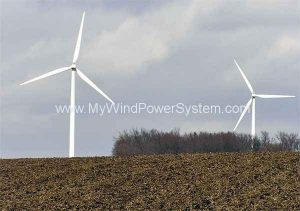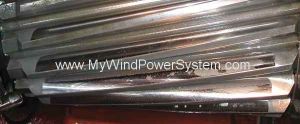One of the major problems with wind power is the (in)ability to store the power generated. When it is windy, everything is fine and dandy. But on calm days in Winter, how are you going to power your home? There may be a solution at hand: Researchers from the U.S. Department of Energy’s (DOE) SLAC National Accelerator Laboratory and Stanford University have designed a low-cost, long-life battery that could enable solar and wind energy to become major suppliers to the electrical grid. Too good to be true? Read on.
At the moment the electrical grid in all countries cannot tolerate large and sudden power fluctuations caused by wide swings in wind power (and solar power). As solar and wind’s combined contributions to an electrical grid approach nearly a fifth of all energy, storage systems must be available to smooth out the peaks and troughs of power — storing excess energy and discharging when input drops. A simple notion but one that is difficult to achieve. The new flow battery has a simplified, less expensive design that presents a potentially viable solution for large-scale production.The new Stanford/SLAC battery design uses only one stream of molecules and does not need a membrane at all. That is pretty revoloutionary! Its molecules mostly consist of the relatively inexpensive elements lithium and sulfur, which interact with a piece of lithium metal coated with a barrier that permits electrons to pass without degrading the metal. When discharging, the molecules, called lithium polysulfides, absorb lithium ions; when charging, they lose them back into the liquid.
This could be the solution to one of the biggest wind power problems- that of storing the energy generated on windy days.



